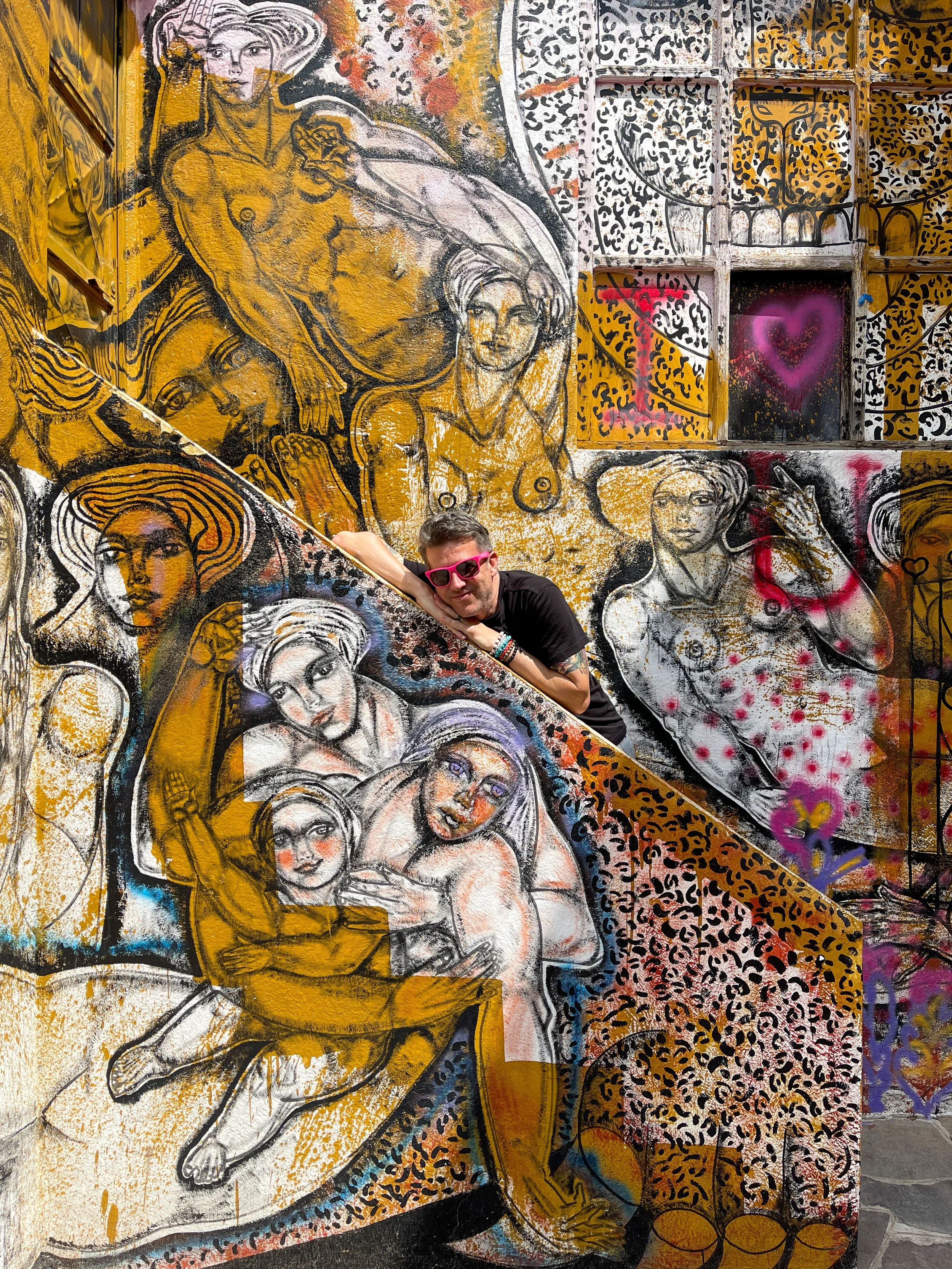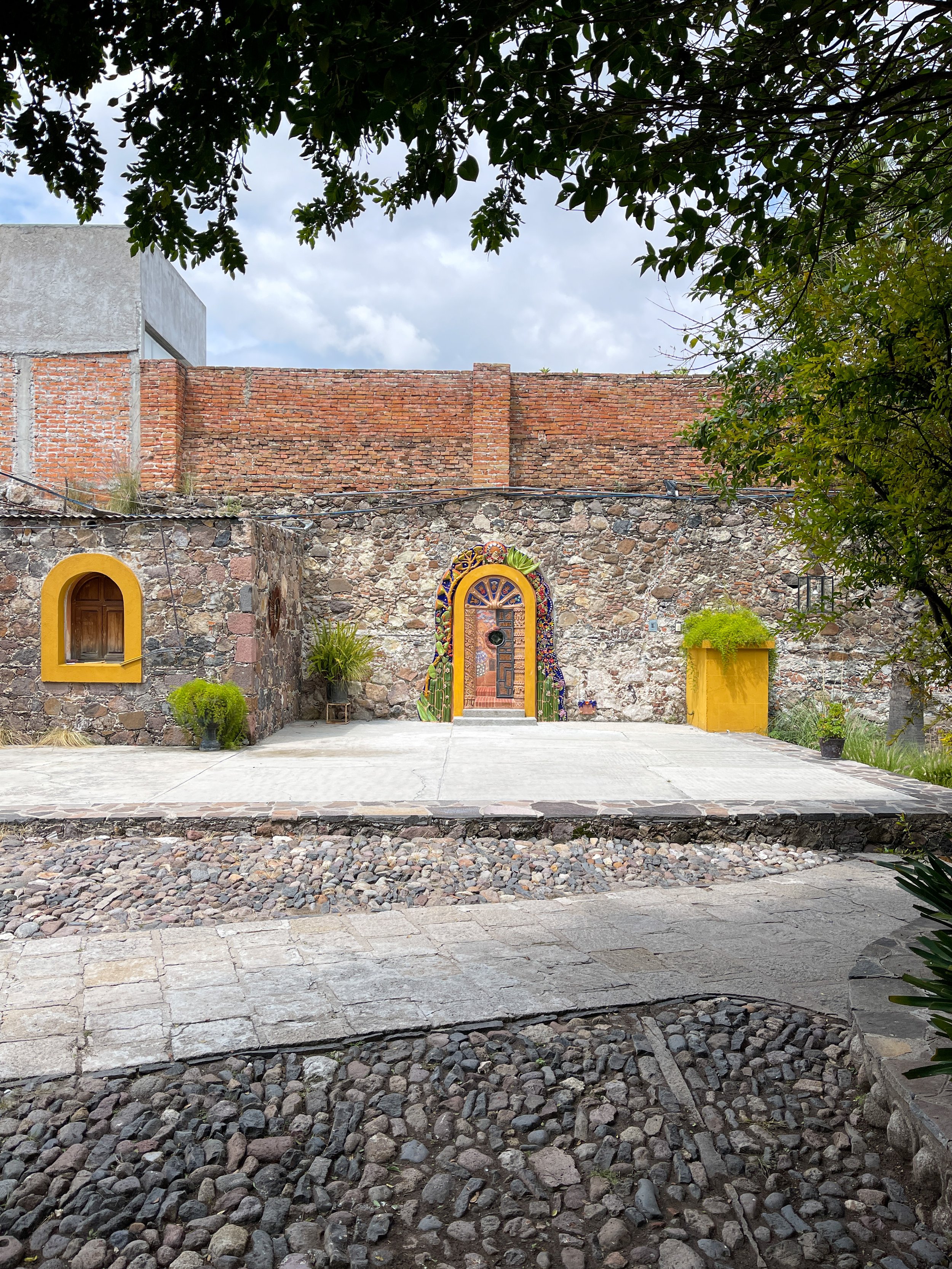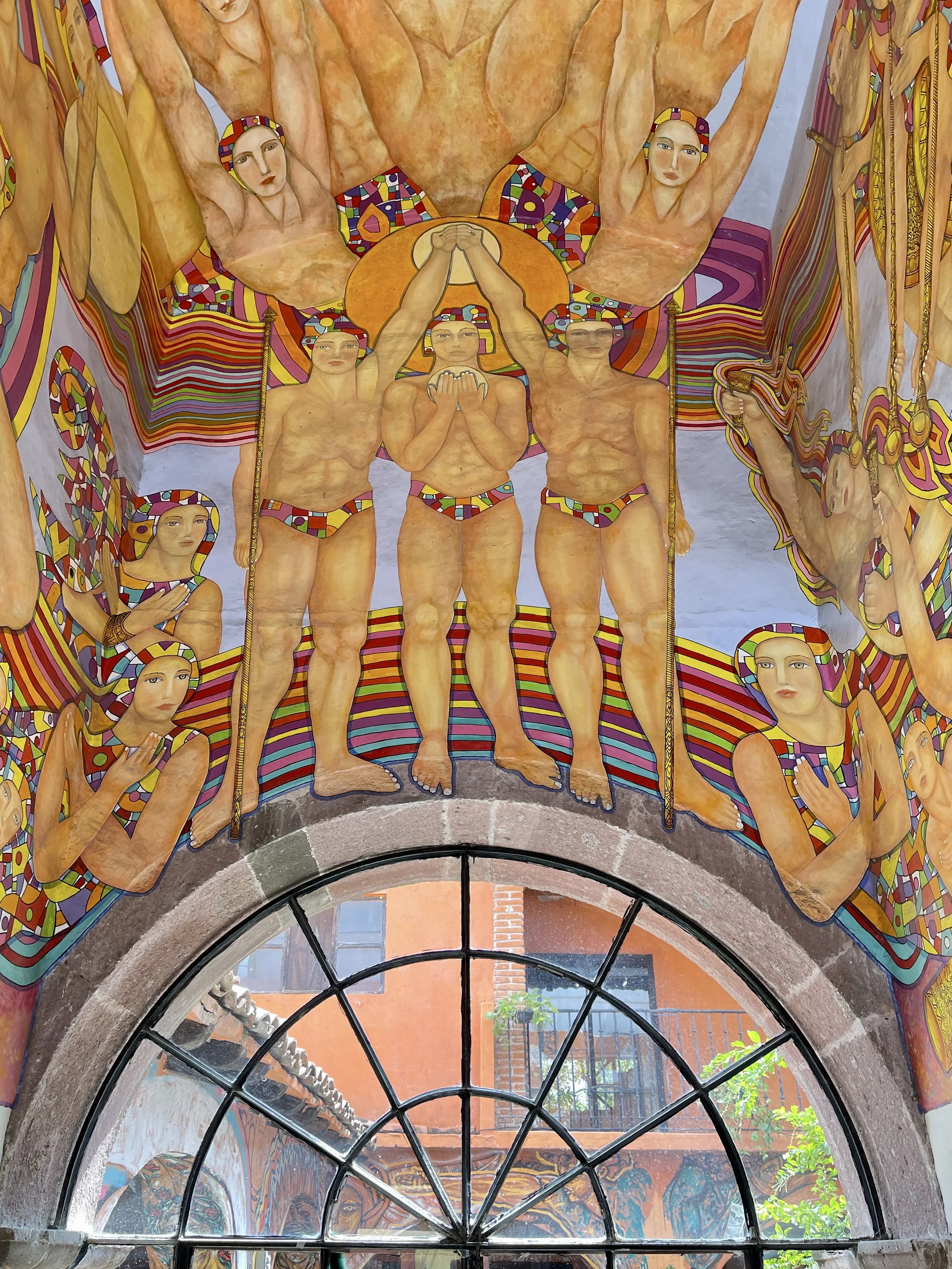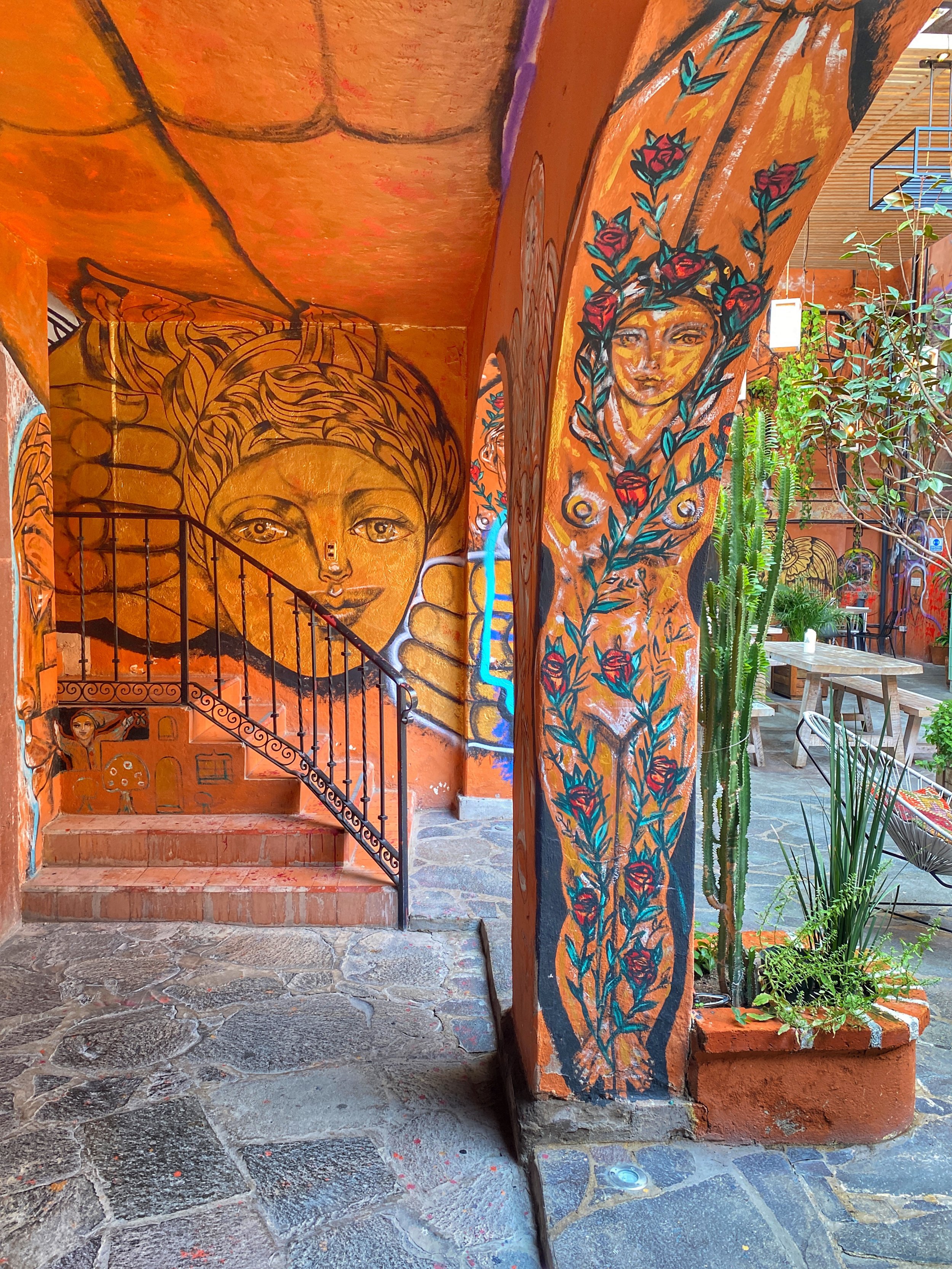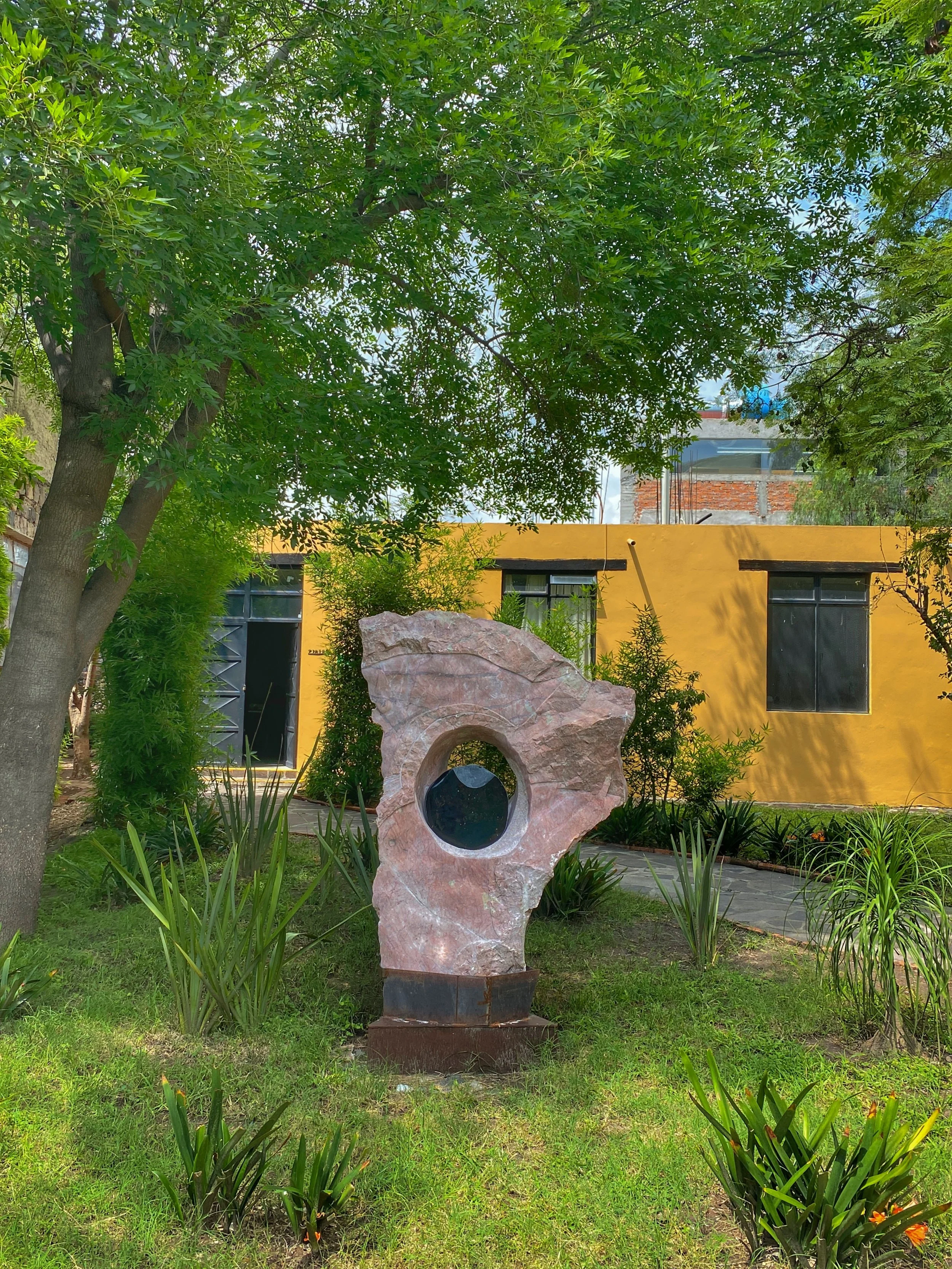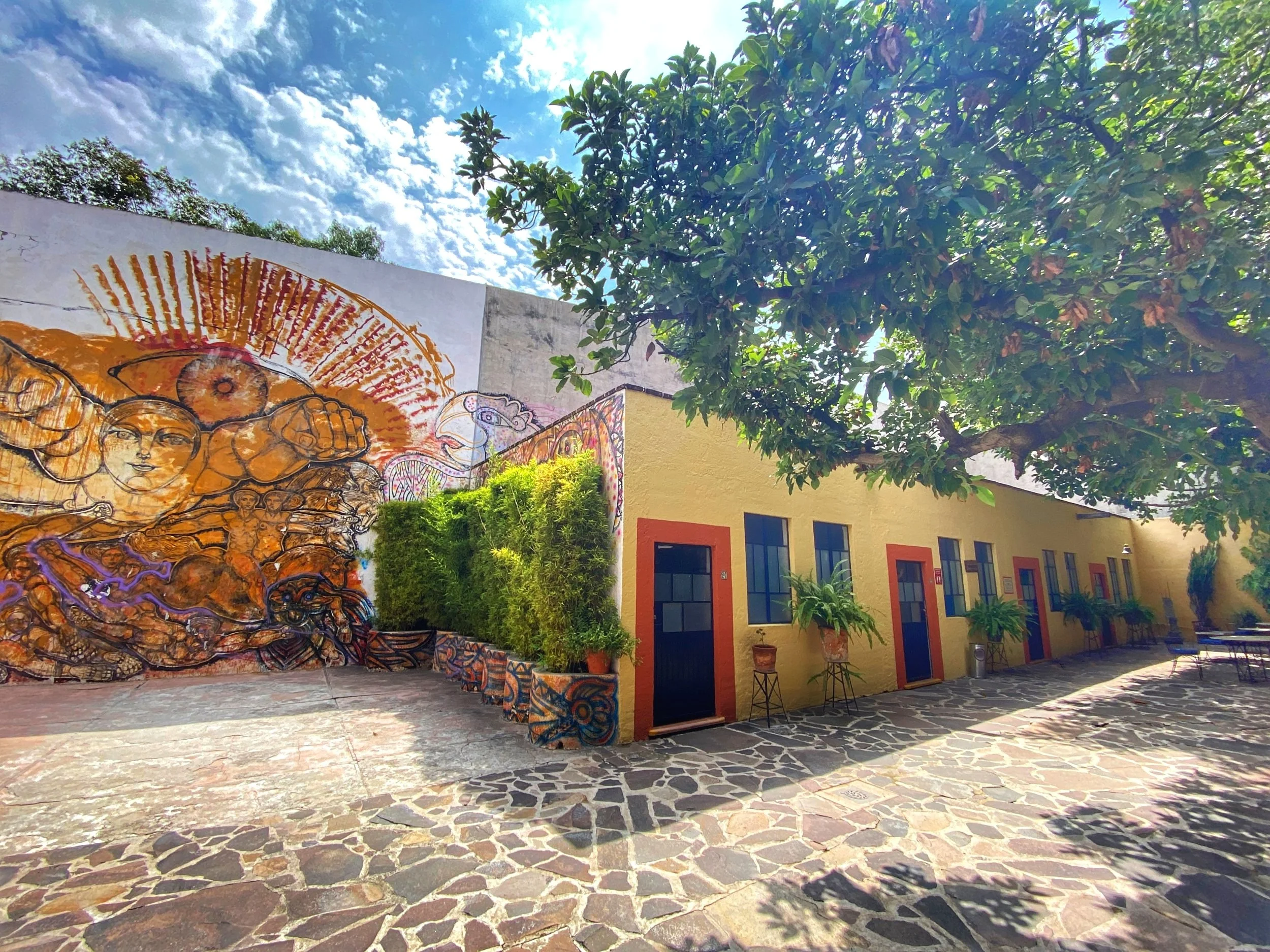This art school and event space holds a special place in the charming town’s transformation. Stop by to see the cool murals and refuel at Murmullo café.
Duke and Wally fell in love with the interior courtyard at the Instituto Allende.
The hulking adobe and fieldstone Instituto Allende is a bit outside of the historic city center of San Miguel de Allende, Mexico. Located on the southwest edge of the Centro, this art school was originally built in 1736 as the summer manor for the influential de la Canal family.
The Instituto Allende teaches a variety of fine arts, including sculpture.
San Miguel de Allende Goes Artsy
After Mexico’s War of Independence in 1910, and the decline of silver mining, which had brought San Miguel de Allende its fortune, the colonial town faced an uncertain future. Credit for undertaking its transformation into an artists colony has largely been given to U.S. expat Stirling Dickinson, who became director of the Instituto Allende in the ’50s.
Yet this is only part of the story. Native son and former Guanajuato governor Enriquez Fernández Martínez and his American wife, Nell Harris, were the instrumental force behind the art school’s founding. Their enduring legacy was carried on by their son Rodolfo, and his daughter Zara is the current director.
However, it was not the first academic art school in SMA. Peruvian artist and diplomat-in-exile Felipe Cossío del Pomar, received support from President Lázaro Cárdenas to transform the 19th century convent of the Order of the Immaculate Conception, known locally as Las Monjas (The Nuns), into la Escuela Universitaria de Bellas Artes, the University School of Fine Arts. (The building is now occupied by the government-run cultural center known as the Centro Cultural Ignacio Ramírez “El Nigromante.”)
Sterling Dickinson helped open up San Miguel de Allende as a center for the arts.
Class Act: Dickinson Comes oN the Scene
Dickinson’s arrival in 1937, at the invitation of Chicago Lyric Opera tenor and Hollywood actor José Mojica, helped shape the future of San Miguel de Allende. He was transported from the train station to the Jardín, the town’s main square, outside of La Parroquia church, in the wee hours of the morning by a mule-drawn cart. When he saw the cathedral’s spires rising out of the mist, he uttered, “My God, what a place!” We couldn’t agree more.
Days later, Dickinson decided to stay and purchased the ruins of a former tannery on a hill overlooking the town, which he converted into his home. The property and land cost a mere $90. Mojica was leading a coalition to promote San Miguel as a magnet for cultured tourists. Film stars, composers, singers, intellectuals, local politicians and artists showed up regularly at his soirées.
The Expressionist works of David Leonardo Chávez cover much of the Instituto.
After its founding, the Instituto Allende became part of the University of Guanajuato, offering master’s degrees in fine arts, and began to gain international recognition. By 1960 it had grown both in size and scope and also offered a bachelor’s program in fine arts. Enrollment at the school continued to rise, and the town’s cultural reputation attracted tourists and expats.
Wally couldn’t get enough of Chávez’s fantastical paintings.
Dickinson came from an affluent Chicago family and had a knack for public relations. His passion for the arts and the culture of San Miguel itself laid the groundwork for promoting the burgeoning school. A 1948 Life magazine article described San Miguel as a “G.I. Paradise,” and given the relatively affordable rents — $10 per month — it’s no surprise that veterans queued up for an opportunity to attend college here.
As a teacher at the Instituto, Dickinson became known for his Aspects of Mexico course, which combined lectures and experiential field trips. He attempted to foster a relationship built on mutual respect for indigenous Mexican culture and history among his students (to various levels of success).
Out back, you can wander around the beautiful campus and see the various classrooms.
Uncommon Grounds: A Walk Around Campus
Wally and I stopped by the main entrance of the Instituto on a Friday afternoon and found its massive wooden doors locked tight. Wally knocked on the door, and a janitor instantly opened it — only to inform us that it was closed to the public for a couple of days.
The institute is now split into two buildings: one for classes and a café, and another for weddings and other events. Unfortunately, we were unable to see the murals created in the 1950s by John DeMelim and James Pinto.
We were able to enter the school building, though, through the administrative offices, which had an exuberant mural by contemporary Mexican Expressionist David Leonardo Chávez that crowns the ceiling and part of the walls. The artwork is rich with jewel tones and patterns depicting stylized swimmers.
This mural of swimmers is one of the first you’ll see when you enter through reception.
Not a bad place to get a degree in art, eh?
While wandering into the adjoining space, we paused to admire more of the painterly works of Chávez, which covers the walls. Beyond, a few students were scattered throughout the leafy park-like courtyard, sitting in the grass and enjoying the dappled afternoon sunlight. Stone paths bisect the grounds leading to pennant-shaped signs pointing students to the various workshops and studios, including ceramics, drawing, jewelry, painting, printmaking, sculpture and weaving. The school also offers a range of Spanish language immersion classes.
A colorful mural by the bathrooms out back
The Instituto was originally the summer residence of a wealthy family.
After taking a few photos, Wally and I exited on the far side of the campus, where a small group was setting up for an event in the enclosed egress. A young woman told us that this was for Rodarte, a bazaar for artists, makers and local designers from around Mexico to sell their works. The Instituto has always had a philanthropic component since its inception in 1950. Revenue from the event gives back to the community by providing art supplies for low-income students and teachers in the surrounding area.
The main section of Murmullo is chic and minimalist — but we chose to eat in the colorful mural-covered courtyard.
Murmurs and Musings at Murmullo Café
We left the grounds and had a snack at the charming Murmullo café, which is carved out from the Institute property. Our lively server recommended we split the falafel, which Wally and I ordered and agreed was quite possibly the best we’ve ever had.
Quite possibly the best falafel pita we’ve ever had
Duke and Wally had a delightful lunch at Murmullo — great food, drinks, setting and service.
You couldn’t ask for a cooler setting to enjoy a coffee, beer or bite to eat.
They also serve coffee, which was the perfect excuse for us to caffeinate with iced skim lattes, as well as beer and kombucha. The café has three different seating areas, two indoors and one outdoors. We chose the open-air courtyard, surrounded by Chávez’s fantastical work. The fare and the setting make it worth a visit. Try a coffee, a local microbrew and the falafel. You won’t regret it. –Duke
Ancha de San Antonio 22
Zona Centro
San Miguel de Allende
México





